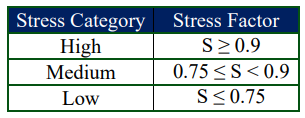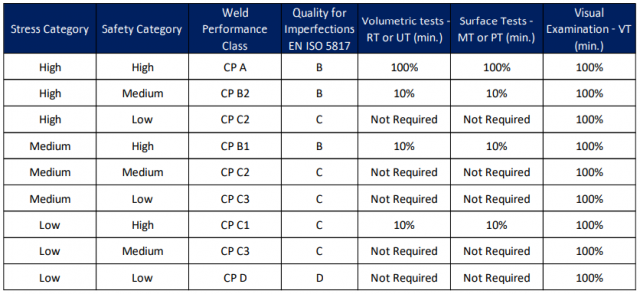New Strategy to Evaluate Specific and Complex Welds Application Using EN ISO 5817 Standard
In order to evaluate welding of specific and complex applications, such as welding of high strength steel for manufacturing of electric vehicles structures, it’s necessary to adapt the standard to its assurance and secure the quality of the process.
With this idea in mind, a new strategy was proposed to evaluate the welds based on the ISO 5817 standard based on safety and stress categories.
The safety category defines the consequences of failure of the single welded joint with respect to the effects on persons, facilities, and the environment.
The safety categories are differentiated as follows:
- Low: Failure of the welded joint does not lead to any direct impairment of the overall function. Consequential events with personal injuries are unlikely.
- Medium: Failure of the welded joint leads to an impairment of the overall function or can lead to consequential events with personal injuries.
- High: Failure of the welded joint leads to consequential events with personal injuries and breakdown of the overall function.
Since it cannot be considered as a quantitative classification, it can be made based on the supervisor’s opinion or based on crash tests.
However, the classification of the welds based on safety criteria has to be made using computational simulation with the weld configuration adopted in the real production, using the real throat thickness, weld length…
For this classification, it’s considered the ultimate tensile strength (UTS) of the material welded as reference to establish a stress factor (S) by comparison this value with the maximum stress obtains in each weld configuration.
Finally, regarding these stress factors, it will be possible to classify the weld according to their stress category, as presented in Table 1.
Table 1 - Stress Categories definition.

The weld performance classes shall be defined in the design phase depending on the safety and stress category (Table 2). The responsible welding coordinator should be consulted with respect to practicability, feasibility, and testing.
Table 2 - Crossed matrix between safety and stress categories.

Following the cross matrix illustrated in the Table 2, the responsible welding coordinator can use the performed classification of the welds, and from that, determine the acceptance criteria and the amount of non-destructive tests necessary for each weld, as it is illustrated in Table 3.
Table 3 - Determination of the acceptance criteria level based on safety and stress categories.
With the level of acceptance criteria required for each weld, it’s already possible to use the EN ISO 5817 standard to perform the evaluation and qualification of the weld.
Acknowledgements
The presented results were achieved within the project "Advanced Manufacturing Solution Tightly Aligned with Business Needs" – AVANGARD. This project is funded by the European Union within the frame of the Horizon 2020 research and innovation program under Grant Agreement No. 869986
